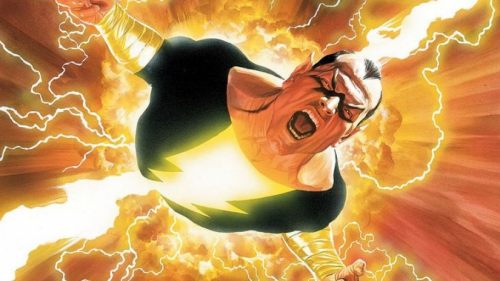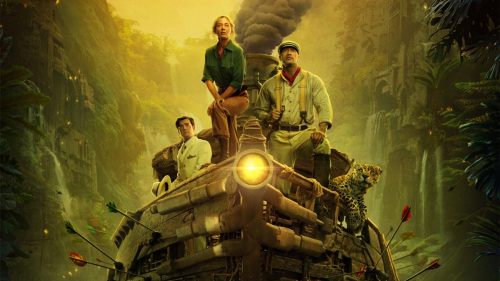Jaume Collet-Serra Talks THE COMMUTER, Liam Neeson & Genre Movies
We love Jaume Collet-Serra here at BMD, and his team-ups with Liam Neeson - Non-Stop, Unknown, Run All Night - have quickly become a genre cinema mainstay. It's tough to imagine a filmic landscape where we don't have the legendary actor trying to prevent some terrible catastrophe from occurring, all while Collet-Serra whips the camera around with reckless abandon. Their collaborations are some of the most fun mainstream movies being crafted - throwbacks to the mid-level adult thrillers from the '90s they just don't make enough of anymore. Now comes The Commuter, the duo's Strangers On A Train, filtered through the Spanish filmmaker's wild lens, containing one take fight scenes and full-scale destruction. The picture's a total blast, and you should see it, post haste.
We were lucky enough to sit down with the director, and what followed was a rather fun conversation about his continued partnership with Neeson, and how he keeps these movies feeling fresh each time around...
BMD: You've made a bit of a niche for yourself out of crafting these mid-range action movies. What keeps you coming back to genre films?
Jaume Collet-Serra: Well, I couldn't have done it without Liam [Neeson]. After the whole Taken thing, a new audience discovered him, and he's the one who wants to make movies like this. If he wasn't interested, I wouldn't be here. He loves these tight little thrillers, and I love them, too. Together, we found a group of people - crew, financiers, etc. - who are willing to go in with us on these movies and really make them something special. What that gives me is a great little sandbox, where I have a bunch of control and freedom, not only in how the story is told, but also in terms of how I get to stylize the movie. When you have Liam and a group of great actors, there's less pressure from the studio on "how are we going to market this?" or "are we going to make a sequel?" which allows us to give these movies a bit more a hand-crafted feel, and people appreciate that. There isn't a machine making them, but a team of human artists. We have fun doing it.
But that fun also allows me to recognize, with each movie, how to make the next one a little better. If you like doing what you do - which I do, very much - you look at your work and are always trying to make it better or more interesting. For instance, with [The Commuter] I didn't want Liam to be a character who has this secret, dark past, or who is an alcoholic. I just wanted to make a movie where he's this family man - a good father, and good husband - who's been taking the same train to work for ten years, which allows Liam to be as he is in real life: this smiling, incredibly charming person you just love to be around. He's not a dark guy.
BMD: And that's what I was going to ask about, too: as great as the action is, you're really stretching yourself in a formal sense here at times. For example, the intro to Liam's character is just spectacular, where you cut together ten years of the same commute into this really dynamic montage.
JCS: Well, thank you. I was really worried about that sequence because I was trying to explain it to people at first, and they just weren't really getting what I was saying. That was an idea that I had because my goal is to make every audience member the main character. But how do I explain this commute to an audience that is worldwide? If you live in London, or New York, or Mumbai, your commute's going to be a little different, so there had to be a universal quality to it. Because this is the character's only power. He gets chosen because he's there every day.
So, I wanted to show little snippets of his daily life, over a passage of time, and then splice them all together into this sequential montage. To be honest, I wasn't even sure if it was going to work, and a lot of people weren't sure either until we got the sound and the rhythm quite right. Everything has to be in place for something like that, because it could get very confusing. Once I figured that out, I knew people would get into the movie and understand why [Liam Neeson's character] was chosen to be caught up in this conspiracy.
BMD: There's also an economic subtext to the film, as Liam's character even tells a Wall Street broker "from the American public, fuck you." His whole motivation to get involved with this conspiracy on the train is because he needs money.
JCS: For me, it wasn't so much economic as it was about age. He's a normal man, with a normal job, who then loses his job, and is discriminated against because he's an older, more experienced individual, and a company can hire someone much younger for far less money.
People with experience are no longer valued anymore. They're more expensive. That's going to happen to us all at some point. Someone's going to look at me one day and say "Jaume, you're done. You're not in tune with what people want anymore. I'm sorry." That was my way to say, "no, you are the one who is in control as to when you're done with your job." It isn't right - he starts the movie with a job that he doesn't necessarily love, but is still working hard at and is still [fired] by the company. So, I wanted to set him on a journey where he gets his mojo back.
BMD: Regaining his "mojo" just happens to involve exploding trains here.
JCS: That's the fun of movies, right? Let's say something, but have fun while doing it.
BMD: Can you talk about the one take fight sequence at the mid-way point? I love talking to directors about why and how they stage these rather elaborate set pieces.
JCS: I wanted to capture the moment where [Liam Neeson's] head goes out the window, and you see the other train coming to hit him, but I didn't want to change the style of shooting up until that point. So, the thinking was doing the whole shot up until it ends at that point, which would be just a wonderful climax to this moment.
Obviously, it was very difficult to do that, as you have to stitch a couple shots together in order to do that. We did the whole scene in one day, and used all one lens. We choreographed it with the actors and stunt people and cameramen a week before shooting, because when you usually do a fight, for three takes you can get the punches to line up in matching. But here we wanted to just keep it going, which is exhausting for the actors after a while, and thus less accurate. It was frustrating, and tiring, and paid off.
BMD: The Commuter also feels like it's in dialogue with Hitchcock - specifically something like Strangers On A Train...
JCS: Trains have always been great fodder for cinema. The first time anybody shot anything with a camera was a train. What I wanted to take away from Hitchcock was the simplicity of the concept - there's a conversation between two individuals who've never met, a dilemma arises, and then the action occurs - all the sudden the innocence of the scene escalates into something sinister. But the other trait of his I've always loved is taking an everyman and placing him in this extraordinary situation. The audience is with the character the whole time, making the decisions with him, which makes it thrilling. The rest is the style that we apply.
BMD: And Liam Neeson keeps saying that this is going to be his last action movie...
JCS: [immediately waves this off] He keeps denying that. This isn't the last. No way.
BMD: Are you gonna talk him into doing more?
JCS: Of course I am. This is not our last. Believe me.
The Commuter is in theaters today. Get your tickets here.



